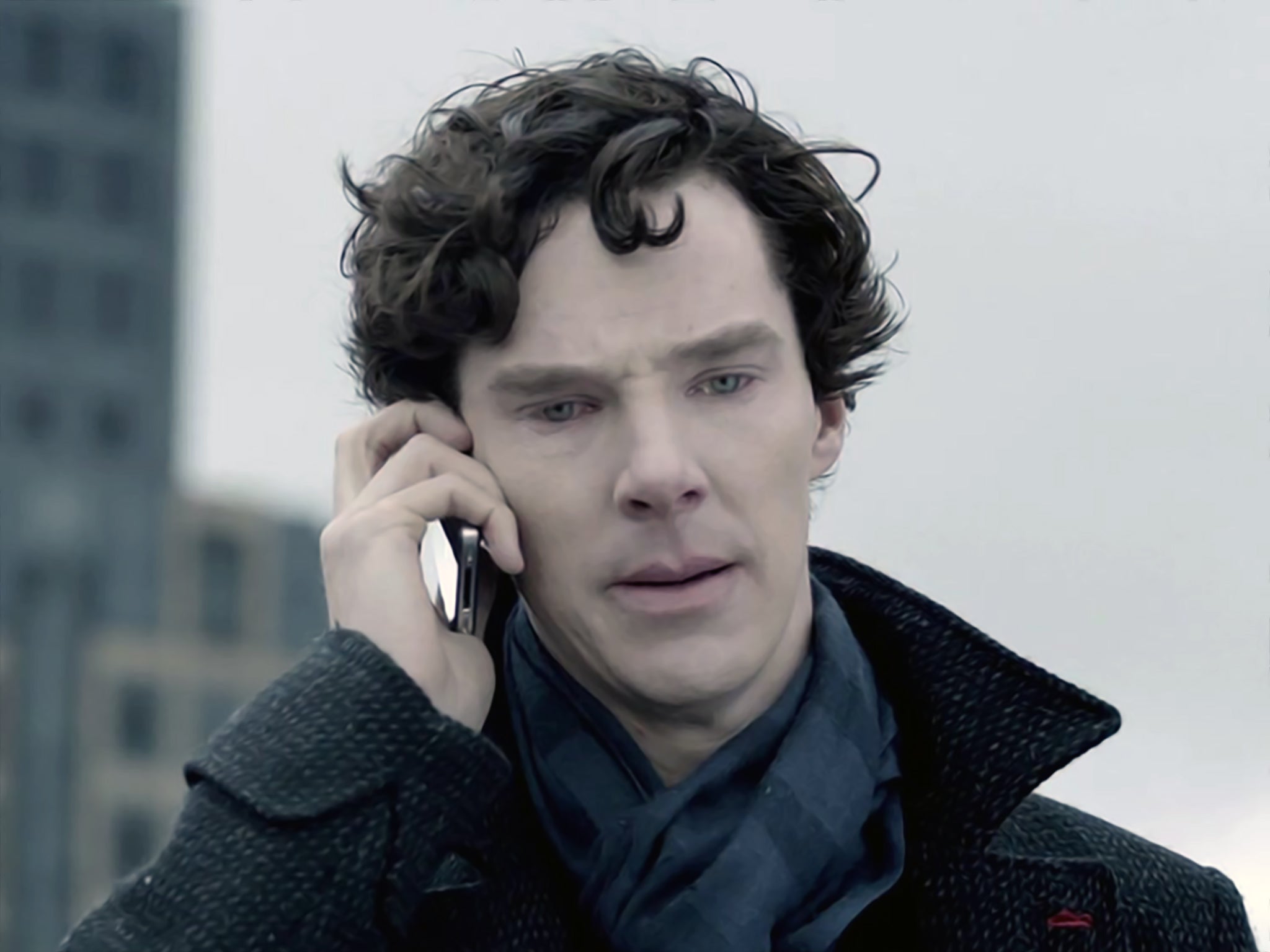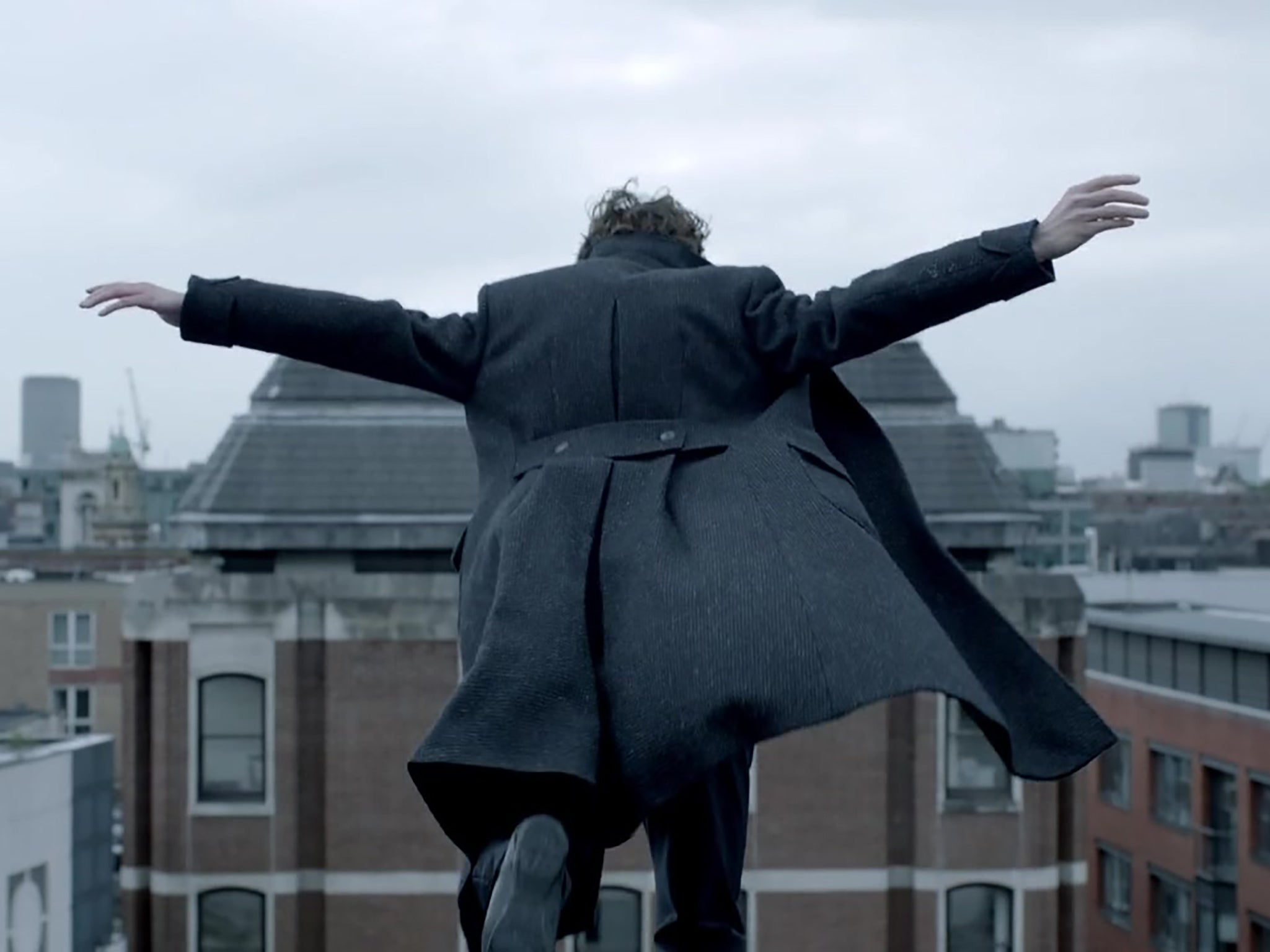Benedict Cumbersplat: Why Sherlock never recovered from surviving his own death, 10 years on
The 2012 episode, which aired 10 years ago this weekend, became one of the most talked-about cliffhangers in TV history, writes Michael Hogan. But while Sherlock survived ‘The Reichnbach Fall’, the show didn’t

Your support helps us to tell the story
From reproductive rights to climate change to Big Tech, The Independent is on the ground when the story is developing. Whether it's investigating the financials of Elon Musk's pro-Trump PAC or producing our latest documentary, 'The A Word', which shines a light on the American women fighting for reproductive rights, we know how important it is to parse out the facts from the messaging.
At such a critical moment in US history, we need reporters on the ground. Your donation allows us to keep sending journalists to speak to both sides of the story.
The Independent is trusted by Americans across the entire political spectrum. And unlike many other quality news outlets, we choose not to lock Americans out of our reporting and analysis with paywalls. We believe quality journalism should be available to everyone, paid for by those who can afford it.
Your support makes all the difference.My best friend, Sherlock Holmes, is dead.” That’s what Sherlock’s traumatised Dr John Watson (Martin Freeman) told his therapist in the shock opening of “The Reichenbach Fall”. But was he?
It’s 10 years this weekend since that episode ended with Benedict Cumberbatch’s supergeek sleuth appearing to kill himself by leaping off a roof. It became one of the most talked-about TV cliffhangers since Dallas’s infamous “Who shot JR?” storyline three decades before. Yet in stark contrast to its protagonist’s miraculous survival, the show itself would never quite recover.
The BBC’s contemporary reboot of Sir Arthur Conan Doyle’s classic detective stories – masterminded by Doctor Who alumni Steven Moffat and Mark Gatiss – had debuted two years earlier. Whizzy, witty and wonderfully performed, it was an instant cultural phenomenon.
Sherlock became the UK’s most-watched drama series of the 21st century – at least until Line of Duty came along. The first series made an internet-breaking star of Cumberbatch (whose fans dubbed themselves “Cumberbitches”), scooped Emmys and Baftas, and was syndicated worldwide. Even Holmes’s trademark £800 Belstaff greatcoat became a sellout.
The follow-up series, premiering on New Year’s Day 2012, built on that swishy-coated, sharp-cheekboned success. It pushed ratings past the 10 million mark and got Cumberbitches even hotter under their upturned Belstaff collars. The three-part run climaxed on 15 January, with an instalment largely based on Conan Doyle story The Final Problem, in which Holmes and his nemesis James Moriarty are presumed to have plummeted to their deaths from Switzerland’s Reichenbach waterfall.
The 2012 TV equivalent portrayed “consulting criminal” Jim Moriarty’s plan to discredit and kill his arch foe. He convinced the public that Holmes had faked his famous cases, destroying his reputation and driving him to suicide. Realising his life was in grave danger, Sherlock visited pathologist Molly Hooper (Louise Brealey) in her lab at St Bart’s, before arranging to meet Moriarty (the scenery-chewing Andrew Scott) on the hospital roof.
In a wordy showdown, Moriarty gave Holmes an ultimatum: die by suicide or hitmen would simultaneously gun down Watson, their landlady Mrs Hudson (Una Stubbs) and DI Greg Lestrade (Rupert Graves). Sherlock deduced that Moriarty must have a way of calling off the killers – at which point Moriarty shot himself. Sherlock’s options were closed. The only way to save his friends was to jump.
Watson watched in horror from the street as Holmes swan-dived off the roof. He stumbled over, grief-stricken, as the bloodied corpse was stretchered away. We saw a tabloid front page headlined “Suicide of Fake Genius”. However, when Watson visited Sherlock’s grave, the man himself was seen watching from a discreet distance. The nation gasped. The credits rolled.
How did he pull it off? Cue feverish speculation on social media. Fan forums exploded with theories involving dummies, hallucinogenic drugs and bodies from Molly’s morgue. The sequence was endlessly rewound and pored over. Moffat fuelled speculation by impishly saying there was “a clue everybody’s missed”. Holmes might not have died in that dramatic leap but some would say the series did. As Sherlock the man jumped off that roof, Sherlock the show arguably jumped the shark.

Watch Apple TV+ free for 7 days
New subscribers only. £8.99/mo. after free trial. Plan auto-renews until cancelled

Watch Apple TV+ free for 7 days
New subscribers only. £8.99/mo. after free trial. Plan auto-renews until cancelled
The feverishly awaited reveal of how Holmes survived didn’t arrive until two years later. The trouble was that in the interim, writers Moffat and Gatiss had watched the speculation with satisfied smiles on their faces – and decided to weave that fan frenzy into the script itself.

First came the Christmas mini-episode “Many Happy Returns”. It followed Philip Anderson (Jonathan Aris), a former member of the Metropolitan Police’s Forensic Services, who’d been fired after becoming fixated on his belief that Sherlock was still alive.
By New Year’s Day 2014, all eyes were on BBC One to finally find answers. Almost 13 million watched “The Empty Hearse”, inspired by Conan Doyle’s Adventure of the Empty House. The episode saw Holmes reunited with Watson and the duo defeat an underground terrorist network. Enough of that, came the cry from sofas nationwide, what about the suicide stunt?
A flashback showed Holmes bouncing back up on a bungee rope and escaping into the hospital through a window, leaving Moriarty’s body in a Sherlock mask to mislead onlookers. There was even a cameo from mind trickster Derren Brown, hypnotising Watson to allow time for this to be set up. However, this was swiftly shown to be a “bollocks” conspiracy theory dreamt up by Anderson. Swizz.
Another reconstruction showed Sherlock and Moriarty in cahoots, fooling Watson with a makeshift mannequin before falling into a passionate embrace. Cut to Anderson dismissing this as a work of homoerotic fan-fiction.
Finally, Holmes visited him to outline how his homeless network had positioned an inflatable crashmat, before posing as bystanders and paramedics. Holmes leapt onto it and squeezed a squash ball under his arm to temporarily cut off his pulse. Anderson picked holes in this version of events, cackled maniacally and ripped his theories off the walls. Another swizz.
The episode featured fan clubs, hashtags and elaborate hypotheses. Representing the real-life discourse, Anderson was disappointed by every explanation. “Everyone’s a critic,” quipped Holmes. This was Moffat and Gatiss mocking the sceptics, heading off any potential backlash with smug in-jokes.
The consensus explanation seemed to be “Operation Lazarus”: a giant airbag hidden by an ambulance station, a lookalike cadaver supplied by Molly, a cyclist colliding with Watson to distract him. But nobody could quite be sure. Rather than one easy answer, we got several sort-of-but-not-really answers.

Perhaps no single solution would have pleased everybody. This risked pleasing nobody. It was playfully postmodern but ultimately frustrating. Like Moriarty told Holmes on that hospital roof: “That’s your weakness. You always want everything to be clever”. Echoing Moffat’s tenure as Doctor Who showrunner, which grew overcomplicated and self-indulgent, sister show Sherlock – once universally acclaimed but suddenly dividing audiences – began to disappear up its own Baker Street back alley.
Watson’s wife Mary (Amanda Abbington) was unmasked as a ninja assassin. Holmes coldly shot an adversary in public, before being swiftly cleared of murder when Moriarty rose from the grave. An entire Victorian fantasy episode took place inside Sherlock’s drug-addled “mind palace”.
The following series continued the decline, receiving decidedly mixed reviews and scoring just 56 per cent on critical aggregator site Rotten Tomatoes – a steep fall from 94 per cent for earlier series. Don’t even get me started on all that convoluted, non-canonical business with Sherlock’s shape-shifting, long-lost evil sister Eurus (Sian Brooke). By the time the last episode aired, 221B Baker Street had been blown to smithereens, Watson was a widower and Holmes described as “a junkie who solved crimes to get high”.
It’s now five long years since Sherlock last strode across our screens, brain whirring, coat billowing. Moffat and Gatiss had plotted out another series but were undecided about whether to produce it. Although the creators and cast have all expressed interest in making more, scheduling conflicts mean it’s still stuck in development hell.
Fans are left up in the air, like a falling Sherlock. Let’s hope the show rises Lazarus-like too – and when it does, it’s more elementary, my dear writers.
‘Sherlock’ is available on iPlayer, BritBox, Alibi and Amazon Prime Video



Join our commenting forum
Join thought-provoking conversations, follow other Independent readers and see their replies
Comments